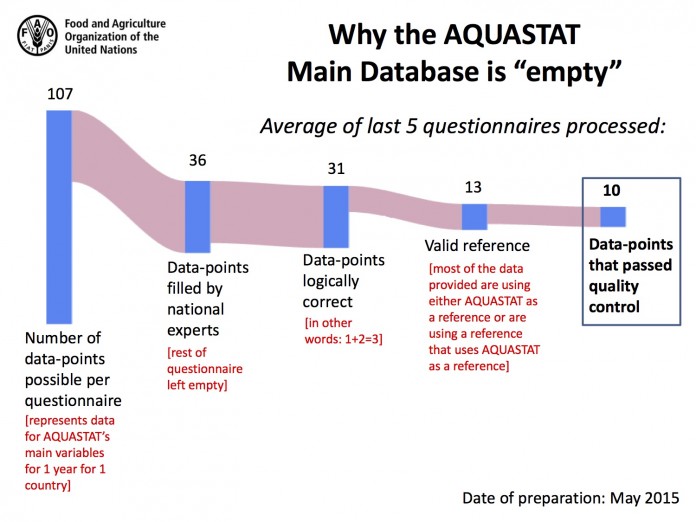The Exacting Demands of Precise Water Statistics
*Second in Aqua-Statisticians: A five part series

Marisha Wojciechowska-Shibuya: Walk us through how a specific and significant data point in the AQUASTAT database is collected, treated and published?
Karen Frenken: Let’s start with data collection. Once we conduct a literature review at the country and sub-country level, we work with a national resource person and provide them with a detailed questionnaire.
The questionnaire lists all the variables, their associated metadata (with exact definitions), the source reference sheet, and standardized instructions on the preparation of the qualitative country description.
Data submitted through this process is then vetted and validated by us. That may seem relatively easy, but for just one variable in one year of one country, we must put in place a whole validation process. A sound judgement requires our gathering and comparing to many other variables, which poses challenges that border on the impossible.
Consider one variable: “Direct use of treated municipal wastewater.”
First, we need to be sure that values are mathematically correct. The sum of direct use of treated municipal wastewater and the treated municipal wastewater discharged must be equal to the municipal wastewater treated.

Then, verification is done within the same category of variables, in this case the wastewater category. For example, treated municipal wastewater always needs to be less or at most equal to collected municipal wastewater. It can never be higher. Collected municipal wastewater can never be higher than produced municipal wastewater.
A third order of magnitude in the checking relies on comparison with other variables, to judge whether a value makes sense:
- How does the data obtained for produced municipal wastewater compare to the population in the municipalities?
- How does municipal wastewater produced compare to the water withdrawn by municipalities?
- How does the water withdrawn by municipalities compare to the available water resources?
Finally, we vet the data through national authorities and experts who request feedback and approval, which is always done before sharing information externally with the world.
This is just an example of a few checking steps amongst many more checks that we conduct to validate just one data point or one variable, for one year, for one country. This same checking process is repeated for all data points, for all variables, for all years, and for all countries in AQUASTAT.
The reality though is that now, obtaining quality data and moreover, data for which AQUASTAT itself is not the source, is becoming more and more a challenge as the graph below shows.








